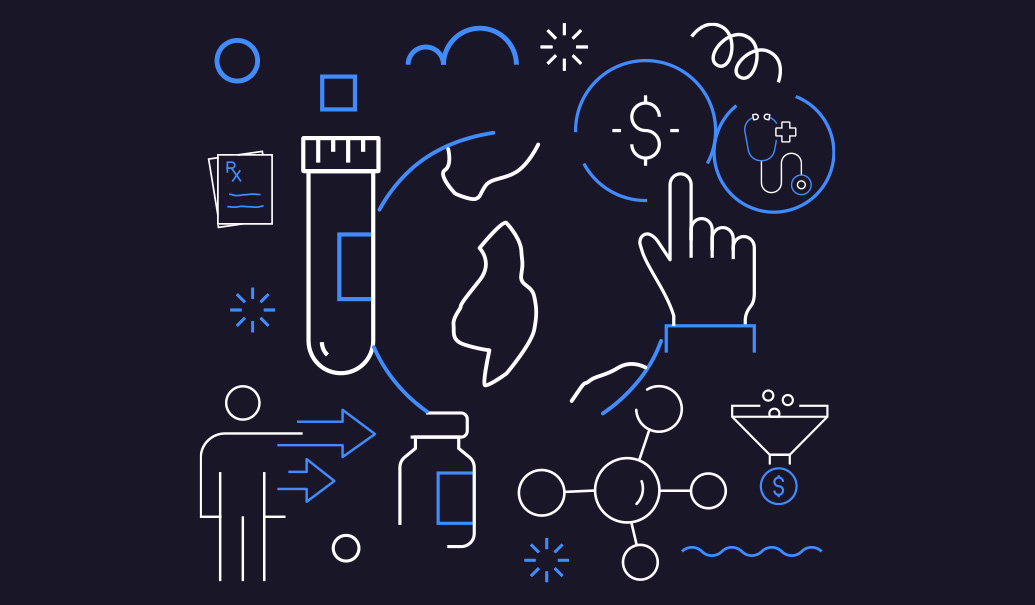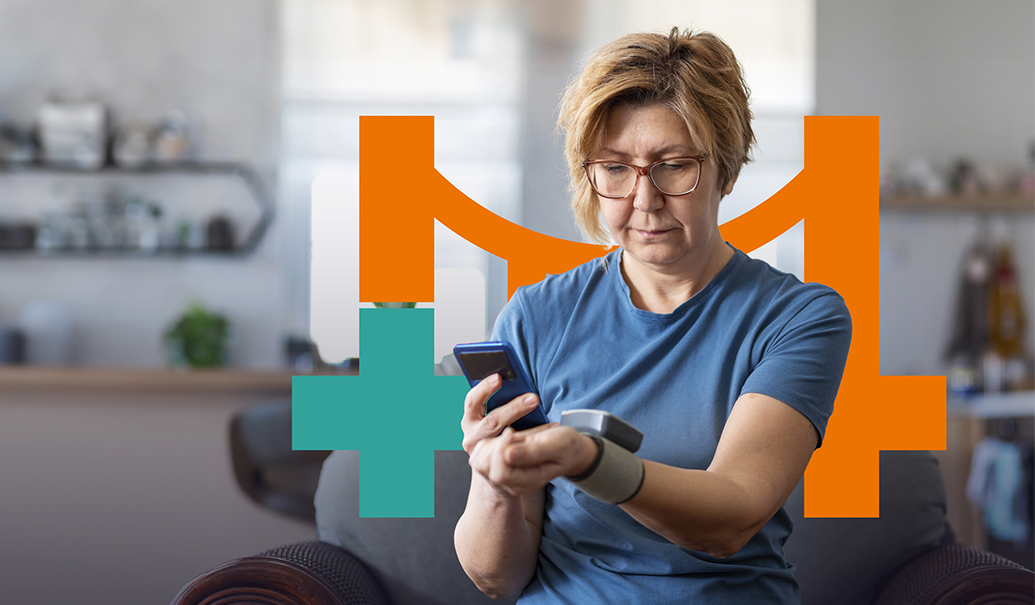We’ve reached an undeniable turning point in how the healthcare system treats obesity. What’s less clear is if we have the will to act on this sea change while there’s still time to influence public health. We now have effective medications to treat obesity with clear long-term benefits beyond weight loss. As we saw recently in the top-line findings from Novo Nordisk’s SELECT trial, Wegovy cut the risk of cardiovascular events by 20% in patients with obesity and established heart disease. While this is great news, it also raised the stakes.
If current efforts to treat or prevent obesity don’t improve, experts predict that the global economic impact of obesity will reach $4.35 trillion annually by 2035. Obesity is tied to increases in healthcare costs for patients, with medical costs linked to obesity climbing to approximately $260.6 billion a year in the U.S. alone. On an individual basis, adults with obesity spend an average of $1,861 more per year on medical costs than those who don’t, while people with severe obesity, or a body mass index (BMI) of over 40, spend an average of $3,097 more per year.
“A useful analog for what we propose already exists in pharma—the commercial model that vaccine manufacturers followed to address COVID-19.”
What this economic outlook misses, of course, are the costs to the patient beyond their finances. We cannot overlook the mental and emotional toll of being overweight in a culture that celebrates and rewards thinness. The interventions heralded by most physicians—exercise more, eat less, join a weight loss program—ring hollow to people who struggle with their weight. For them, going to the gym, buying airline tickets and ordering food at a restaurant with friends can trigger feelings of shame that lead to a vicious cycle of avoiding their doctor, abandoning interventions and disengaging in social activities. It fails to acknowledge that many of us have tried to manage our weight, with varying levels of success. A 2020 study found U.S. adults try to lose weight an average of eight times over their lifetime.
While there is no single answer to solving this epidemic, we believe the use of effective and safe medications must be scaled as part of any plan to address obesity. Glucagon-like peptide-1 receptor agonists (GLP-1s), which include Wegovy, Ozempic and Mounjaro, among others, have shown excellent weight loss results. However, the current annual cost for most of these drugs is approximately $15,000 per year, pushing them far beyond the reach of many of the patients who need them most.
As long as these drugs are priced at or near their current levels, any health benefits will be beside the point. If manufacturers continue to accept the status quo and keep prices where they are, we expect one of two things will happen:
1. They will ultimately fail to convince other healthcare stakeholders that their unaffordable treatments should be covered. GLP-1s will remain niche treatments for the rich or those with very good insurance and the obesity epidemic will continue to worsen for at least another generation.
2. They will successfully convince other healthcare stakeholders that unaffordable obesity drugs must be covered, putting those stakeholders in an impossible bind. If manufacturers force the hands of payers and the government, those stakeholders could respond in ways that aren’t friendly to the industry.
But we believe there is a third path that a pharma manufacturer has yet to pursue:
3. Dramatically lower the price of these drugs and adopt a mass market commercial model that prioritizes population health. There are many benefits to this approach, which we’ll enumerate below. But it’s important to remember that socioeconomic status is closely associated with obesity, and lowering drug costs will remove a key barrier for many of those most in need of care. This population health-first approach is a moral imperative—and it can still be a profitable one.
We’re not saying that every manufacturer with a GLP-1 in the market or the pipeline needs to go this route, but it’s a route required to tackle a problem of this scale. An ecosystem where several options of varying quality and price command a decent market share exists in nearly every industry, from TVs to automobiles. Pharma manufacturers have been reluctant to adopt similar strategies because they haven’t had to. In many therapy areas, the more effective or safer product wins through a combination of guaranteed exclusivity and a (proper) desire from patients and healthcare professionals to seek the best care available. But there is an unprecedented opportunity in the obesity space to better stratify the population to any number of interventions. Not everyone will need a drug, and not everyone who needs a drug will need the most effective option.
A useful analog for what we propose already exists in pharma—the commercial model that vaccine manufacturers followed to address COVID-19. No one can reasonably argue that Pfizer or Moderna got anything resembling the amount of value they created with their vaccine business. While they made many billions from those vaccines, that’s still by orders of magnitude less than the value they created before accounting for all the lives saved. The Commonwealth Fund estimates that the COVID-19 vaccines saved $1.15 trillion in medical costs alone. When you’re playing in a very, very mass market, it’s acceptable—perhaps even required—that you’ll generate value you cannot fully capture.
What manufacturers risk if they don’t pursue a mass market model
But why should a pharma manufacturer be prepared to deviate so dramatically from the status quo and lower the price? Especially when it’s produced a therapy class of such obvious financial value? The reasons are legion, but here are five:
- If they don’t, then payers, employers and governments will be strongly incentivized to define access narrowly to contain ballooning costs, meaning comparatively few patients will benefit and pharma will miss its chance to help solve the most serious public health crisis of the day.
- Several companies are working on oral, small-molecule GLP-1s and could easily decide to pivot to a mass market commercial model, chopping incumbents at the knees and decimating their first-mover advantage.
- Chinese life sciences companies are studying drugs offering efficacy and safety comparable to those developed by Western companies. These Chinese GLP-1s could supply ex-U.S. and ex-European markets, and consumer demand for cheap weight loss drugs in the U.S. and Europe could convince regulators to soften their stance toward drugs developed and tested in China.
- Countries could take extreme steps to solve their obesity crises, such as invalidating patents or developing home-grown molecules to create more affordable drugs for their citizenry. While it’s less likely to happen in developed nations like the U.S., governments in other countries could decide obesity poses a big enough public health threat to implement compulsory licensing that would allow them to manufacture GLP-1s more cheaply elsewhere.
- Eventually, if these drugs continue to work as promised, there will come a time—by 2040 or sooner—when they’ll be broadly available at an affordable price. Semaglutide will lose exclusivity, payer contracting will bring net price down and supply will come online. By then, the obesity epidemic will be infinitely more difficult, if not impossible, to address.
Pharmaceutical manufacturers still have a road to revenue if they choose the path of drastically lowering their prices. The obesity market is highly patient driven, and patients are highly motivated. A Kaiser Family Foundation health tracking poll following public opinion about GLP-1s revealed that nearly half of adults are interested in a safe and effective weight loss drug. A STAT-Harris survey published in June discovered that half of Americans would spend at least $100 per month for drugs like Wegovy. A study from Ro and the Obesity Action Coalition found that 44% of Americans with obesity would change their jobs to gain coverage for obesity treatment, and just over half would stay in a job they didn’t like if their employer’s plan covered these drugs. Consumers are motivated and they’re making their interest clear.
But even if a manufacturer succeeded in lowering the prices to the point where everyone who qualifies for a GLP-1 can obtain one, manufacturers will still have only solved part of their problem. Even at current demand, many patients with GLP-1 scripts are having trouble finding refills.
Strategies for keeping GLP-1s in stock
Novo Nordisk and Eli Lilly expect shortages of their assets to persist and their GLP-1s are already on the FDA’s Drug Shortages list. While manufacturers are doing their best to boost manufacturing, there are additional solutions to consider:
- Forecast demand based not on the estimates of today, but the potential population of the future. Obesity affects nearly a billion people worldwide, but GLP-1s currently only reach millions of patients. It’s hard to scale for capacity if you’re projecting 10 million patients in the next few years, rather than hundreds of millions.
- Advocate for public-private coinvestment in the supply chain like we saw when the U.S. government enabled production of COVID-19 vaccines or the recent CHIPS Act to jump-start the U.S.’s semiconductor chip capacity.
- License technology to contract manufacturers around the world, like tech companies do today. Apple does not make the iPhone—it designs and markets it but leaves manufacturing to its partners. Pharma companies already use this model in limited capacity in the obesity market today, but we advocate for much greater scale—10 to 20 times what they’re capable of currently.
- It’s well known that Apple CEO Tim Cook holds inventory management and the data required to power those insights in high regard. Like at Apple, there is a clear need for pharma manufacturers to digitalize the supply chain to have a robust understanding of weaknesses and challenges that could arise as supply is scaled to solve obesity. This would involve digitalizing the manufacturing process transfer capabilities to significantly expedite the capability to tune manufacturing capacity up or down internally or through contract manufacturers. What’s more, it will optimize resource allocation and use, improving pharma manufacturers’ bottom lines and environmental sustainability.
Today, there’s little to stop patient demand other than access, affordability and lack of product. By lowering prices and enhancing the supply chain, a pharmaceutical manufacturer would be taking bold action to overcome these barriers. But it’s not the only action manufacturers need to pursue. They need a commercial model that combines the mass market approach made possible by a lower price and more supply with a platform or “operating system” mentality to truly reshape the patient experience for the better. There is an opportunity for pharmaceutical manufacturers to be major players in helping to redefine the patient journey from a focus on weight loss to weight management, where innovation beyond the pill is a necessity.
Innovate beyond the pill (or injectable)
At some point soon, patients using a GLP-1 will lose significant weight. They will be happy with the weight loss they’ve achieved and will likely seek to move off the drug. What happens then? Do they move to lifestyle intervention? Is there a threshold of weight gain that puts them back on a drug? We don’t have answers for these questions and there are few common guidelines to navigate this uncharted territory.
To capture the most value from their obesity treatments, manufacturers need to ask themselves whether they’re happy just being the supplier of the drug or if they want to be seen as a long-time partner in a weight management journey. While there’s a clear revenue opportunity in just being a supplier, there’s potentially more value in capturing the patient throughout their journey of sustainable weight management and healthier living.
We’re not talking about replicating past models of partnership, like Novo Nordisk and Noom or Eli Lilly and Livongo. In those cases, manufacturers and digital health formed an incomplete partnership, one where the pharma manufacturer partially subsidized the cost of using the digital tool. While enticing for some patients, it’s not incentive to continue engagement once the subsidy runs out and the patient is still left paying for a costly drug and digital program.
What we’re proposing is more ambitious. We believe that manufacturers must think like digital health companies and create the platform patients want to engage with throughout their weight management journey. The platform could take different forms—such as a website or an app—that would serve as the operating system through which patients conduct weight management activities, including taking a drug, following a diet or some combination of interventions.
We propose a platform akin to Apple’s App Store, an environment where Apple users access banking services, schedule appointments, book flights and more. But those services are all provided by third-party actors embedded in Apple’s ecosystem. A weight management platform could connect patients with coaching, gym memberships, nutritionists, physical therapy, doctor appointments, community support meet-ups and more. A platform could do this through the channel each patient prefers—virtually, in person or hybrid. Platforms like this exist in some form today in pharma. AbbVie’s Humira Complete, for example, has nurse ambassadors that educate and motivate patients across their treatment journey and provide help with insurance and financial assistance programs. AbbVie has been more successful than most pharma manufacturers in capturing patients with Humira scripts and patient service offerings.
Imagine that a pharma manufacturer actually captured the tens of millions of patients who want to be on a GLP-1 or related drug through a weight management platform supportive of holistic health. That manufacturer would be wildly valuable to other partners, like Noom, Omada and other wellness players. The data generated by those tens of millions of patients could be analyzed to develop highly effective and individualized weight management journeys. It’d be possible to learn what tool works best, with what patient and at what time, because the operating system connects the pill, digital offerings and physical support. This would be truly innovative for pharma. It’s not an opportunity that will last forever, either. Digital health companies are working to figure this out, but they lack a crucial piece of the puzzle that only pharma has—a scalable, safe, effective, evidence-based weight management medication.
Pharma can’t afford the reputational harm of waiting to end this epidemic
The pharmaceutical industry has already lost much of the goodwill it generated by helping to end the COVID-19 pandemic. Failing to get a handle on the obesity epidemic could still inflict reputational harm—and consumers know it. A Kaiser poll found that only one in five adults trust pharma to price drugs fairly. By lowering the prices of a class of drugs, the industry has an opportunity to redeem itself in both the eyes of the public and those who absolutely see these treatments as a lifeline. The industry has an opportunity to solve a public health challenge in a truly innovative way, with far-reaching effects that will contribute much greater value to all of us.
Add insights to your inbox
We’ll send you content you’ll want to read – and put to use.
















